A.C. Watkins - Holiness Heroes
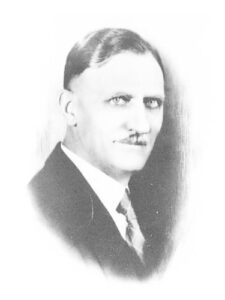
Aura Clay Watkins
Aura Clay Watkins, the youngest son of Rev. John F. and Laura Ann Watkins, was born at College Mound, Missouri, August 24, 1885.
He was converted when a youth, and was later sanctified wholly as a second definite work of grace. As a young man, he received the call to the ministry.
He received his early education at McGee Holiness College, in College Mound, Missouri. In 1902 he attended the Dakota Business College in Fargo, North Dakota. From 1910 to 1913, he was associated with his three brothers at this institution. Among the courses that he taught was penmanship. He wrote a beautiful hand, and his signature on a diploma graced it with exquisite artistry.
In the summer of 1913, Bro. Watkins, as he was known and called by all those who knew him, held a number of revival meetings in the West. He later recorded this tour in a booklet entitled “Pacific Coast Evangelistic Tour,” published by Pentecostal Publishing Co., Louisville, Kentucky, 1914. I remember his telling me, when I was a student at KCCBS in the early 1940s, that the Library of Congress contacted him and asked him to send a copy to the Library. He told me this, with a merry twinkle in his eyes (as was his wont), and I could tell that this gave him a good measure of satisfaction. At the close of this evangelistic effort, he came to Kansas City, Missouri, where he lived for a time with his sister, May, and her husband, William H. Adkins. Some time after his move to Kansas City, he earned his A. B. degree from the Kansas City University.
In 1915 Bro. Watkins wrote and published (Kansas City, MO.) a treatise entitled “Entire Sanctification (The Obtaining and Retaining). He dedicated it to his parents, John F. And Laura A. Watkins, with the words “whose lives have meant most to me in obtaining this blessed experience.” As he stated in the Preface, he wished to place in the hands of people “an inexpensive treatise on the main points as to how to obtain the experience of entire sanctification.”
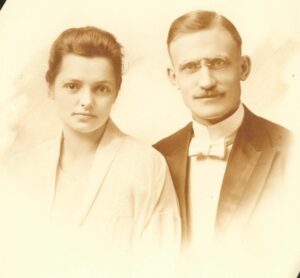 On November 8, 1916, he was married to Miss Bessie Beck of Miami, Oklahoma. The couple had three children: A. C. Jr., who died in 1925; James Francis Watkins; and Eleanor Beck (Watkins) Whitsett.
On November 8, 1916, he was married to Miss Bessie Beck of Miami, Oklahoma. The couple had three children: A. C. Jr., who died in 1925; James Francis Watkins; and Eleanor Beck (Watkins) Whitsett.
It may be mentioned here, that A. C. Watkins, representing the “Supremacy” group, and Ray L. Kimbrough, representing the “Sovereignty” group, the sons of ministers of the previous generation, led in the work of reconciliation that resulted in the reunion of the two groups in 1922.
One of Watkins’ visions was the establishment of a congregation of The Church of God (Holiness) in a great metropolitan center. Many of the early churches were situated in small cities and villages, even in the countryside. He chose Kansas City, where he was now residing. On the evening of April 9, 1914, approximately a dozen people met with him in a rented store building. Nine of those present became the founding members of the new congregation. Services were held in rented buildings, until July 1917, when a basement was built at 29th and Askew. In 1928 a superstructure was added. During this time of his early ministry Bro. Watkins was an officer of the Commerce Trust Co., of Kansas City. This association was necessary because of financial considerations attending the establishment of a young church. The mortgage on the basement was burned at the watch night service, December 31, 1922. The mortgage taken out in order to erect the superstructure was retired in 1943 with money pledged in a special Easter service. He served continuously as pastor of the church until the time of his death.
Bro. Watkins was a great preacher. Early in his ministry he regularly went to hear great preachers and observed how they read the Word of God and delivered their sermons. His sermons were thoughtful, developed thematically so as to build up conclusively to the force of the subject he was presenting, and, even more importantly, filled with spiritual instruction and inspiration. The young men and women, many of them destined for the ministry, who attended KCCBS and regularly heard his sermons found in them a valuable example of effective preaching. He was a man of prayer, often spending entire nights in prayer.
The other vision, to which he was devoted throughout his ministry, was the establishment of a general college representative of the entire constituency. His efforts to establish the college in Kansas City, Missouri, go back to the year 1913. At that time, College Mound was a center for the “Supremacy” branch of the church, where both McGee Holiness College and the annual camp meeting were located. The annual convention that year was held in Kansas City, Missouri. A proposal to locate the College in Kansas City, where the advantages of a metropolitan setting would alleviate the limiting circumstances of a rural environment, was defeated. Presumably, Bro. Watkins was a leading figure in support of the proposal. In 1921 the school at College Mound closed because of financial problems.
From this time forward, particularly after he established the Kansas City church, Bro. Watkins pressed for a general college in that city. In February of 1924 a meeting, which was chaired by him, was held in Kansas City to consider the founding of a general school. A resolution to that effect was adopted and a general council formed. Beyond this, there was no further action.
About this time the property in Overland Park, where the present College is located, became available for purchase. It had been a sanitarium, but was then not in use. Bro. Watkins urged the leaders of the church to purchase the property and establish a college. Although his recommendation was not received, he continued to press upon the church the wisdom of a general school in Kansas City.
In May of 1938 a meeting was held in the Kansas City church, at which time it was decided to establish a general school. A representative council was created. A. C. Watkins was elected president; Ray L. Kimbrough, vice-president; and Morey Shaver, dean. The college was named The Kansas City Bible School. Classes were held in the Kansas City church, until 1941, when the property at Overland Park was finally purchased. The name of the school was changed to The Kansas City College and Bible School.
There were, to be sure, many people involved in the establishment of the school, through its successive phases. But if one person may properly be identified as the founder of the school, it is assuredly Bro. Watkins.
According to my 1941 diary, on the evening of Monday, September 8, I borrowed Mrs. Shaver’s car (the only “official” college car; all of the students constantly used it; I’m not sure that she could even drive a car) and drove to Sears and Roebuck to buy some tools to be used in cleaning the campus buildings. Several students spent the next day cleaning the rooms and preparing them for use and occupancy. By Friday, the 12th, most of the rooms in the dormitory were cleaned and the dining room floor waxed. On Tuesday, September 16, I used Bro. Watkins’ car and again went to Sears and Roebuck to get more tools. He and I then drove out to the campus, stopping at the Union Station to pick up Bro. Graef and Bro. Kimbrough, who had come to assist in getting things started. On that day the administration building was put in shape, and the moving van brought out the furniture from the Kansas City buildings. I moved to my room in the new dormitory the following day. The next day, Thursday, September 18, Bro. Graef appeared with a lawn mower he had just purchased, and assigned me the task of keeping the lawns in shape. The first classes at the new campus were held on Tuesday, September 23, 1941. It was a new beginning and, for many, including Bro. Watkins, a dream come true.
Bro. Watkins was marked by what one philosopher, A. N. Whitehead, calls “strength of individuality.” In any group or context he manifested a forceful “presence.” But, notwithstanding this, he was in no sense domineering. He knew how to accept the limitations of conditions and await the time when those conditions would be removed in the interest of progress. His patience in working for the fulfillment of his dream for a college indicates this. Although he was a serious person, committed to the advancement of serious things, he had a fine sense of humor. No one who knew him can forget the friendly smile, the twinkle in his eyes, and the hearty laugh. He cared genuinely for people and identified with his people in his church and his students in his classes.
I became acquainted with Bro. Watkins in the fall of 1939, when I enrolled in the Kansas City Bible School. He met his classes during the early afternoon hours of the day. They were held in a large Sunday School room in the rear of the auditorium of the church. He came into the room with one or two books under his arm. He always sat in a chair, placed his books on a small table in front of him, and either opened the session with prayer or called on a student to give the prayer.
At the time, I did not know what it was called. But later I came to know that his method of teaching was the “Socratic” method – the method the ancient Socrates used, that of question and answer. Bro. Watkins would ask of a student a leading question. Then the dialogue between teacher and student would flow back and forth until the teacher had obtained from his student the response and understanding that he was seeking for the student. Of all the teachers under whom I was later to study, he was the only one who in this respect followed the footsteps of that great Hellenic teacher.
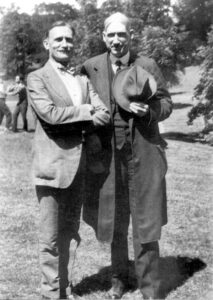 To the young preachers in his classes, he stressed the need for logic and argumentative power, but combined with emotional conviction and force – a combination that he himself exhibited in his ministry. With respect to his insistence on the need to respect reason and logic, I recall an amusing incident. In the class on homiletics – it was the fall term of the 1940-41 academic year – he was belaboring the point with an illustration, all-the-while waxing more “indignant.” Two people were arguing a point. Finally one of the disputants confessed, “You have proven your point, but I’m not going to believe it anyway.” “To make matters worse,” Bro. Watkins said, “they were preachers.” And then he went on: “And they were holiness preachers, too.” Being very youthful, filled with the directness and spontaneity characterizing people from the West, I blurted out: “We figured that.” I think everybody was taken aback. I probably had tread upon dangerous ground. But Bro. Watkins tipped back in his chair and roared with laughter. Never did his sense of humor fail him.
To the young preachers in his classes, he stressed the need for logic and argumentative power, but combined with emotional conviction and force – a combination that he himself exhibited in his ministry. With respect to his insistence on the need to respect reason and logic, I recall an amusing incident. In the class on homiletics – it was the fall term of the 1940-41 academic year – he was belaboring the point with an illustration, all-the-while waxing more “indignant.” Two people were arguing a point. Finally one of the disputants confessed, “You have proven your point, but I’m not going to believe it anyway.” “To make matters worse,” Bro. Watkins said, “they were preachers.” And then he went on: “And they were holiness preachers, too.” Being very youthful, filled with the directness and spontaneity characterizing people from the West, I blurted out: “We figured that.” I think everybody was taken aback. I probably had tread upon dangerous ground. But Bro. Watkins tipped back in his chair and roared with laughter. Never did his sense of humor fail him.
There is no doubt but that Bro. Watkins was the greatest teacher under whom I studied. He exerted the greatest influence upon my life. His picture hangs on the wall of my study at home. During the years the college was located in the church, I lived in a basement room in his home. I did odd jobs around the home and church in exchange for the room. I was also the janitor of the church. There were times when I was troubled over the limitations arising from attending an unaccredited collegiate institution. But I need not have worried. What I gained was far more than what I might have lost. For example, when the summer nights were hot, he and I would take cots out on the flat garage roof and sleep where it was cooler (one could step onto the roof through a door in the kitchen). Before falling asleep, we would talk for a little while, about the events of the day and, more often, about intellectual and spiritual matters.
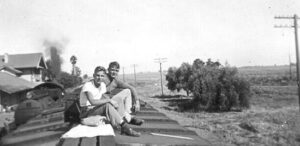 Bro. Watkins was a diarist. He impressed upon me the need to keep a diary. I began the diary on January 1, 1941. In November of that year Bro. Watkins held a revival meeting in Columbia, Missouri. According to my diary, he “commissioned” me to hold his classes and be, not the teacher (and, for that matter perhaps not even a person), but, as he put it, “the guiding element” in them. The last class of A.C.’s (as we sometimes referred to him) that I attended was at the close of the 1941-42 academic year, May 29. In 1943 it became evident that ill health would force him to discontinue permanently his teaching responsibilities. Early in the second semester of the 1942-43 academic year, my senior year, I assumed his classes. The college Board had met on January 5 and asked that I do this. Bro. Watkins visited my advanced theology class twice, once on January 22 and the other time on February 19. He continued his preaching, to the extent to which his failing health permitted. He delivered a sermon at the morning service of the general camp held on the college campus, Sunday, June 4, 1944. My last diary entrance mentioning his name is Thursday, November 8, 1945, the day after his death on November 7. Such a few short years; then the living presence was gone, now for those whom he touched a presence in memory as one “who was, as we may say,” Plato wrote of Socrates, “of all those of his time whom we have known, the best and wisest and most righteous man.”
Bro. Watkins was a diarist. He impressed upon me the need to keep a diary. I began the diary on January 1, 1941. In November of that year Bro. Watkins held a revival meeting in Columbia, Missouri. According to my diary, he “commissioned” me to hold his classes and be, not the teacher (and, for that matter perhaps not even a person), but, as he put it, “the guiding element” in them. The last class of A.C.’s (as we sometimes referred to him) that I attended was at the close of the 1941-42 academic year, May 29. In 1943 it became evident that ill health would force him to discontinue permanently his teaching responsibilities. Early in the second semester of the 1942-43 academic year, my senior year, I assumed his classes. The college Board had met on January 5 and asked that I do this. Bro. Watkins visited my advanced theology class twice, once on January 22 and the other time on February 19. He continued his preaching, to the extent to which his failing health permitted. He delivered a sermon at the morning service of the general camp held on the college campus, Sunday, June 4, 1944. My last diary entrance mentioning his name is Thursday, November 8, 1945, the day after his death on November 7. Such a few short years; then the living presence was gone, now for those whom he touched a presence in memory as one “who was, as we may say,” Plato wrote of Socrates, “of all those of his time whom we have known, the best and wisest and most righteous man.”
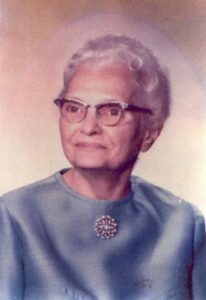 He died on November 7, 1945. His wife wrote:
He died on November 7, 1945. His wife wrote:
A change came on Saturday night before his home-going at 1:00 a.m., on Wednesday morning, November 7. From Saturday night on until he went he seemed to be a citizen of another world. On Sunday morning as we sat together, I read some encouraging passages from the Bible, and then prayed.
Later, he sang a stanza of an old, familiar hymn,
Then in fellowship sweet,
We will sit at His feet,
Or we’ll walk by His side in the way;
What He says, we will do;
Where He sends, we will go–
Never fear, only trust and obey.
He sang it, not once, but several times, and each time he sang it, it sounded sweeter.
A.C. Watkins |
Bro. Watkins was held in high regard by those outside the Church, as well as by those within the connection. Charles H. Stalker, whom I was privileged to hear in a revival in the fall of 1941, wrote:
Dear Brother Watkins was a friend of mine for many years. When I first met him I felt he was a man of God with a vision and a burden for the lost. I was with him many times in meetings, and our fellowship was very precious. I was much impressed in our last meeting that he was finishing his life-work, but I hoped to be with him again.
He was so happy with the way the School was growing, and wanted to send out messengers from there with the message of the Holy Ghost to foreign lands. He was burdened with the church and school, and I felt that he was carrying too much.
On the last Sunday morning of our revival, Brother Watkins prayed a prayer of unusual burden which I shall never forget. His burden was mostly for his own church and people. I felt the prayer would be answered, and that it might take his life to answer it, but it would be answered.
As he asked the blessing of God upon me and my future ministry, I felt I wanted to slip away and be alone with God. This was our last meeting. The memory of that life shall be a blessing and benediction to me as long as I live.
Praying Heaven’s richest blessing upon the work for which he gave his life, may it increase with all the increase of God.
–J. Prescott Johnson

Church of God (Holiness)
The mission of the Church of God (Holiness) is to exalt Christ, equip the Church, and evangelize the world.
